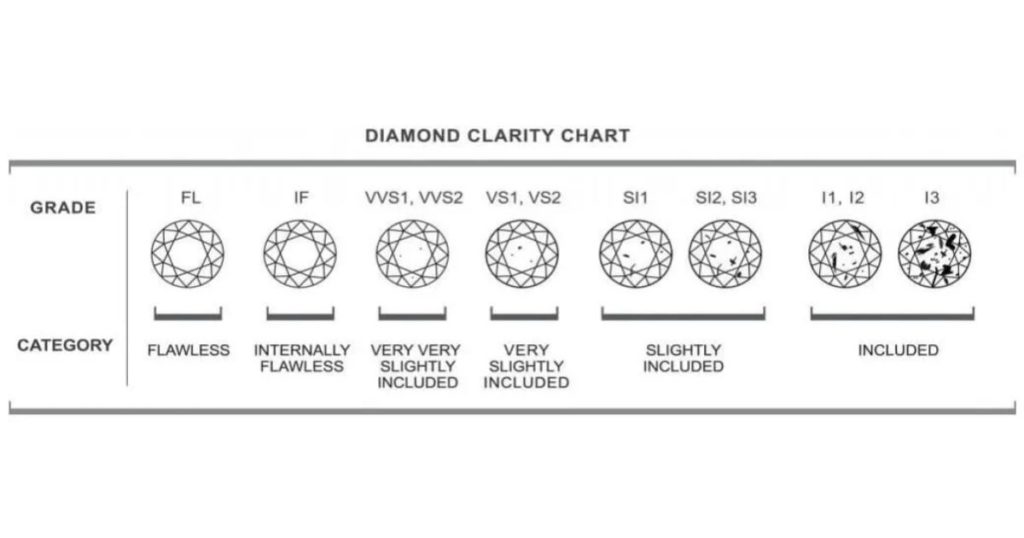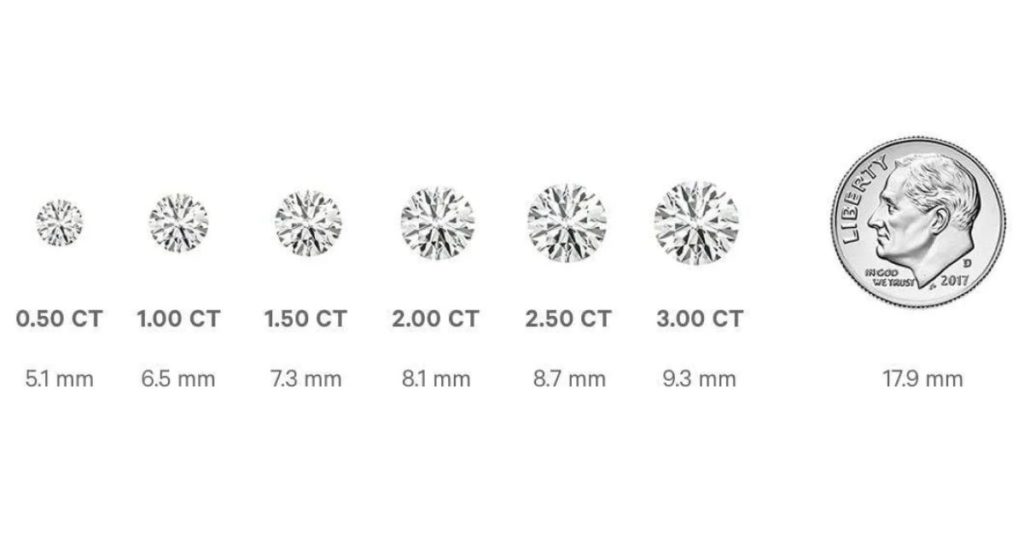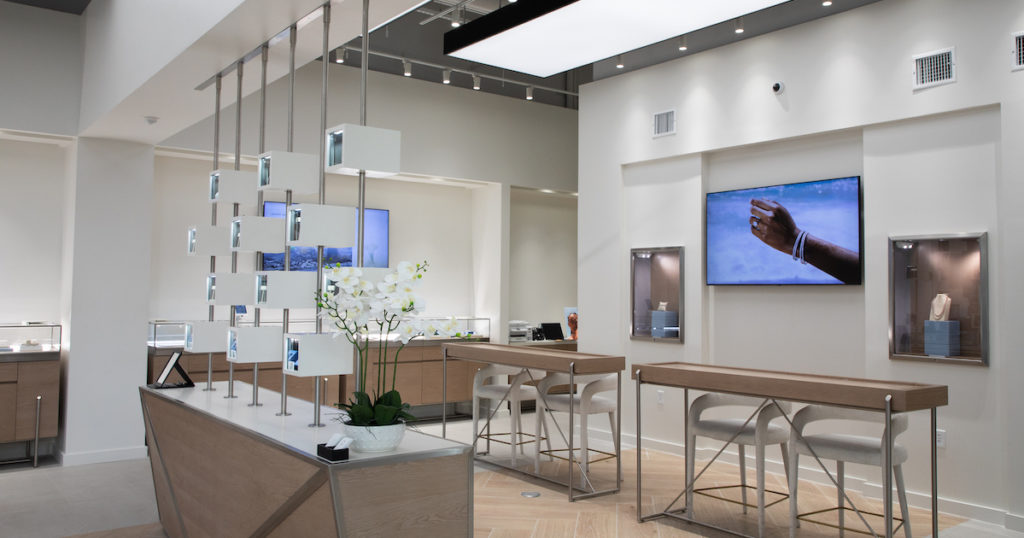Embarking on the journey of finding the perfect engagement ring can be an exciting yet overwhelming experience. With countless options and factors to consider, engagement ring shopping can be daunting. At Clean Origin, we understand this and have created a comprehensive engagement ring guide to help you with this milestone decision.
Our ultimate engagement ring guide for 2023 provides expert advice and insights on every aspect of the process, from understanding the 4Cs of diamond quality to choosing the right setting and metal while staying within your budget.
What Does an Engagement Ring Symbolize?

An engagement ring symbolizes commitment and love between two people. It is a physical representation of a promise to spend the rest of their lives together. The circular shape represents eternity, mirroring a couple’s everlasting love and unity. A partner typically gives the ring as a marriage proposal to show their devotion and dedication to the other person.
Mastering the 4Cs
Understanding the 4Cs – cut, color, clarity, and carat – is crucial when evaluating diamond quality and finding the best value within your budget. These four factors significantly impact your engagement ring’s overall appearance and cost. By familiarizing yourself with the 4Cs, you will gain the knowledge and confidence to select the perfect ring.
Cut

Among the 4Cs, cut is considered the most essential when it comes to fine jewelry, especially engagement rings. The cut of a diamond influences its overall brilliance and sparkle. A well-cut diamond will reflect light effectively, resulting in a breathtaking visual display.
For the ideal engagement ring, consider choosing a very good or higher cut grade so your diamond exhibits maximum sparkle.
Color

Diamond color refers to the presence – or absence – of color in a diamond. Color significantly impacts a diamond’s value. Hence, familiarizing yourself with the GIA diamond color-grading system can be helpful. The scale ranges from D (colorless) to Z (light yellow), with less color being more desirable and valuable in general.
Clarity

Clarity measures the presence of inclusions and blemishes in a diamond, with fewer imperfections resulting in a higher value. The GIA Diamond Clarity Scale categorizes diamonds into 6 categories and has 11 grades, ranging from Flawless to Included. It is crucial to remember that your engagement ring’s setting can affect the clarity of your chosen diamond.
The shape of your diamond can also affect the visibility of inclusions. For instance, step-cut shapes like emeralds tend to make inclusions more visible. In contrast, brilliant cuts like round diamonds tend to hide inclusions more effectively.
Carat

Carat weight refers to the weight of a diamond and is one of the most significant factors along with the cut in determining the value of a diamond. Simply put, the larger the diamond, the rarer and more expensive it is. It’s worth noting that a diamond’s carat weight can also significantly impact its price. Choosing a diamond slightly below a full carat weight can be a smart financial decision, as diamonds weighing exactly one carat tend to be more expensive than those slightly smaller.
Natural vs. Lab Grown Diamonds

In choosing the centerpiece for your engagement ring, it’s beneficial to compare natural and lab grown diamonds. Both options offer unique benefits and drawbacks, but understanding their environmental impact, value, and pricing can help you make an informed decision.
Environmental Impact
Mining diamonds disturb ecosystems, pollute soil and water, causes soil erosion, leads to deforestation, and damages habitats. The ecological impact spreads across large areas as mines continuously expand into new terrain. Vast swathes of land are degraded. Mining also displaces and endangers local wildlife populations.
In contrast, lab diamonds are grown in controlled, contained facilities. The manufacturing process emits significantly less carbon dioxide (CO2) than mining. No ecosystems are harmed in the making of a lab diamond.
By choosing a lab grown diamond for your engagement ring or jewelry, you can celebrate your relationship while also celebrating nature. Lab diamonds allow you to get the glittering stone you desire without contributing to ecological destruction. They offer the glamour of a diamond with an ethically and environmentally friendly origin story.
Value and Pricing
Buying an engagement ring is expensive. However, lab grown diamonds offer sparkling beauty at a fraction of the cost of mined diamonds. On average, lab diamonds are 20% to 40% less expensive than natural diamonds of comparable size and quality.
With a lab diamond, you can stay within your budget and still gift your partner a stunning ring. The money you save can be used toward a larger center stone or higher quality setting. Or you may choose to allocate the savings to other wedding expenses.
The savings on your engagement ring cost will allow you to invest in your shared dreams and goals without sacrificing your engagement ring’s beauty or quality.
Choosing the Right Setting
Choosing an appropriate setting for your engagement ring can accentuate your chosen stone, mirror your partner’s aesthetic, and reflect what your engagement ring symbolizes. There are several popular engagement ring settings, such as solitaire, halo, and pavé, each offering unique benefits and aesthetics.
Let’s explore each of these setting styles in greater detail so you can better understand which one is right for you.
Solitaire Setting

A solitaire setting is a timeless design showcasing a single diamond or gemstone. This popular engagement ring setting emphasizes the beauty and sparkle of the central stone, making it the perfect choice for a diamond ring.
When choosing a solitaire engagement ring, consider the size and shape of your center stone, the type of metal used, and the overall design of the setting. This versatile setting can complement a variety of diamond shapes and sizes, making it an excellent choice for many couples.
Halo Setting

Halo settings are a popular engagement ring setting with a center stone surrounded by smaller stones. This design creates a more prominent and dazzling appearance, making the diamond appear bigger and more radiant. Additionally, this setting is more cost-effective compared to a larger center stone.
Halo settings are available in various styles, such as pavé, micropavé, and split shank. They can be customized to match your style and preferences.
Pavé Setting

Pavé settings are popular for engagement rings as they feature numerous small diamonds along the band, adding extra sparkle and glamour. This setting is particularly useful for enhancing the luminosity and opulence of the ring. It can even create the illusion of a bigger diamond.
However, it is important to keep in mind that pavé settings might pose more cleaning and maintenance challenges than other settings. The small diamonds in the pavé setting could also be more prone to falling out, so it is crucial to ensure that the setting is well cared for to keep it looking its best for years to come.
Selecting the Ideal Metal

Choosing a metal for your engagement ring is a decision that shouldn’t be taken lightly, as it impacts your ring’s overall look, durability, and maintenance. Each metal offers unique benefits and aesthetics you must consider to find the right engagement ring for that special someone. Popular metal options include:
White Gold
White gold is popular for its bright, modern appearance but requires periodic rhodium plating to maintain its shine. This versatile metal offers increased durability compared to yellow gold, resistance to tarnishing in contrast to silver, and is more cost-effective than platinum.
To preserve the luster of your white gold engagement ring, clean it regularly with a mild soap and warm water solution, and have it rhodium plated every few years.
Yellow Gold
Yellow gold offers a classic, warm hue and is available in various karat strengths for durability. As the purest form of gold ring metal, yellow gold is known to be hypoallergenic and easy to maintain.
This traditional metal choice is highly compatible with other metal wedding bands and jewelry, making it a timeless option for your engagement ring.
Rose Gold
Rose gold is known for its romantic pink color and is a hypoallergenic option due to its lack of nickel. This unique metal alloy offers a lustrous pink hue, making it popular for those seeking a distinctive, amorous engagement ring.
Rose gold’s durability and hypoallergenic properties make it an excellent choice for those with sensitive skin or an active lifestyle.
Platinum
Platinum is a durable, hypoallergenic metal with a naturally white appearance, but it is also more expensive than gold options. Platinum’s high density, weight, and scarcity contribute to its higher cost compared to white gold.
However, its non-allergenic properties and natural white hue make it a popular choice for those who value durability and a timeless aesthetic in their engagement ring.
Budgeting for Your Engagement Ring

Setting a budget for an engagement ring lets you focus on what truly matters – expressing your love and commitment. Rather than fixating on the price tag, consider what ring design best symbolizes your relationship. The size of the diamond or metal type isn’t what makes an engagement ring special. What makes it meaningful is the story and sentiments behind it.
Choose a ring you feel good about that fits your financial situation. There are beautiful options at every price point. Discuss your budget with your partner, so you’re both comfortable with the investment. The ring is just a representation of your future together. Concentrate on creating a lasting relationship built on open communication, trust, and generosity. That is the real treasure.
Sizing and Insurance

Finding that perfect engagement ring to symbolize your love is one of the most exciting parts of getting ready to pop the question. But don’t let the thrill of finding the ideal ring cause you to overlook two important details – properly determining your partner’s ring size and insuring your investment.
Taking the time to determine your partner’s ring size accurately will ensure a comfortable, secure fit and avoid any need for resizing down the road. Insuring your ring can protect against loss, theft, or damage, providing peace of mind as you embark on your lifelong journey together.
Determining Ring Size
Figuring out your partner’s ring size doesn’t have to be tricky. Here are a few easy ways to determine their finger size:
- Stealthily borrow one of their rings and trace the inner circumference on a piece of paper. Make sure to note if it’s a pinky ring or worn on another finger, as the sizes may differ. Bring the tracing to a jeweler to measure.
- If they wear rings, carefully measure the diameter with a ring sizer while they’re sleeping or distracted. Most jewelers offer plastic sizers for just a couple bucks.
- Enlist a close friend or family member to casually ask your partner their ring size next time they chat. But make sure they keep it hush-hush!
- Our printable ring sizer is an excellent tool for finding your correct ring size at home. Ring sizers are templates with lines indicating standard ring sizes, including half and quarter sizes, that you wrap around your left ring finger. All you need is a printer and a piece of paper.
- If all else fails, tie a piece of string or dental floss around their left ring finger while they sleep. Mark the spot where it overlaps and measure against a ruler.
The goal is to get as close to their actual ring size as possible without blowing the surprise. It’s always safer to size up since rings can be resized down more easily. With a bit of creativity and stealth, you can determine their perfect fit.
Insuring Your Ring
Insuring your ring can protect against loss, theft, or damage. It’s recommended to insure your engagement ring immediately upon purchase. Obtaining an appraisal for your engagement ring can also help determine its value and ensure it’s adequately insured. Taking these precautions lets you rest easy knowing your investment is protected.
Key Takeaways
- Understand the 4Cs of diamond quality – cut, color, clarity, and carat
- Consider lab grown diamonds for their environmental impact, value, and pricing.
- Choose a metal that suits your budget and lifestyle. Accurately size and insure the ring for protection.
Find Your Dream Engagement Ring at Clean Origin

At Clean Origin, we make it easy to buy an engagement ring. Our stunning lab created diamonds allow you to get a dazzling ring at an incredible value. With a vast selection of elegant and contemporary settings, you’ll find the ideal ring to showcase the breathtaking diamond of your choice.
Skip the crowded mall jewelers and browse beautiful rings online from the comfort of your home. We provide comprehensive education every step of the way so you can shop with confidence. Our diamond experts are always ready to answer questions and provide guidance via virtual consultations. If you would rather browse our lab grown diamond jewelry selection in person, then visit us at a store near you!
Let us turn your vision into a ring that truly reflects your love story. From idea to finished product, we’re here to make buying an engagement ring a joyful and stress-free experience – as it should be.



